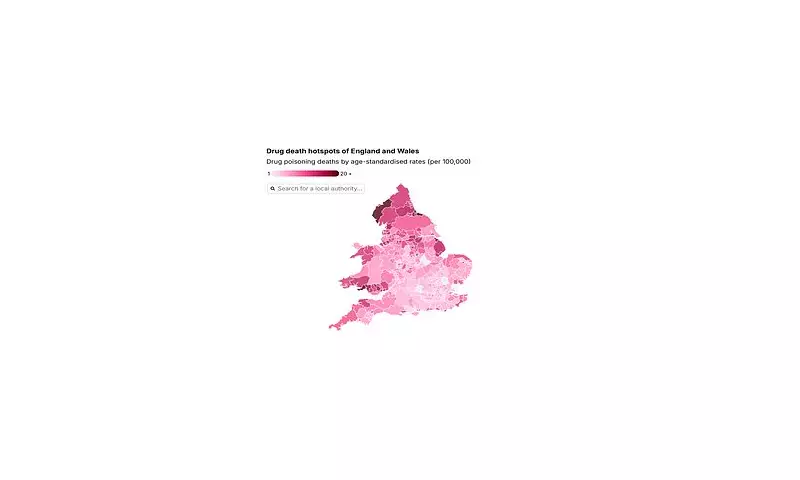
Britain is facing a devastating postcode lottery in drug-related deaths, with shocking new data revealing dramatic regional disparities that highlight a growing public health emergency.
The Stark North-South Divide
Official figures paint a troubling picture of a nation divided, where your address could significantly impact your risk of drug-related mortality. The analysis of Office for National Statistics data shows northern cities and coastal towns are bearing the brunt of this crisis.
Hardest Hit Regions
Blackpool has emerged as the epicentre of the drug death crisis, recording the highest rate nationwide at 21.4 deaths per 100,000 people. This represents more than double the national average and underscores the severity of the situation in coastal communities.
Middlesbrough follows closely with 18.1 deaths per 100,000, while Manchester records 15.9 - all significantly above the England and Wales average of 8.1 deaths per 100,000 population.
London's Surprising Position
In stark contrast, the capital city presents a very different story. Westminster records the lowest rate in England at just 1.5 deaths per 100,000 people, followed by Wokingham at 2.2 and Harrow at 2.3.
This fourteen-fold difference between the worst and best-performing areas highlights the extreme nature of the geographical divide in drug mortality rates.
Regional Breakdown Reveals Patterns
The North West emerges as the English region with the highest drug death rate at 11.8 per 100,000, closely followed by the North East at 10.6. Meanwhile, London records the lowest regional rate at just 5.2 deaths per 100,000 people.
A Growing National Crisis
Tragically, the overall picture shows no signs of improvement. In 2022, England and Wales witnessed 4,907 drug-related deaths - the second-highest number since records began in 1993. This represents only a slight decrease from the peak of 4,969 deaths recorded in 2021.
The data reveals that men are significantly more affected, accounting for nearly 70% of all drug-related fatalities. The age group most at risk remains those between 40 and 49 years old.
Opioids Dominate Fatalities
Opioids, particularly heroin and morphine, continue to be the most common substances involved in drug poisoning deaths, present in 44% of all cases. This underscores the ongoing challenge of opioid dependency across the country.
The persistence of high death rates despite increased awareness and intervention efforts suggests that current approaches may be failing to address the root causes of this complex public health issue.
Call for Targeted Interventions
Public health experts are urging policymakers to develop more targeted strategies that address the specific needs of high-risk regions. The dramatic disparities suggest that a one-size-fits-all approach is insufficient to tackle this multifaceted crisis.
As the data clearly demonstrates, where you live in Britain shouldn't determine your risk of drug-related death - yet the statistics tell a very different story that demands immediate attention and action.





